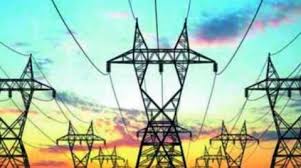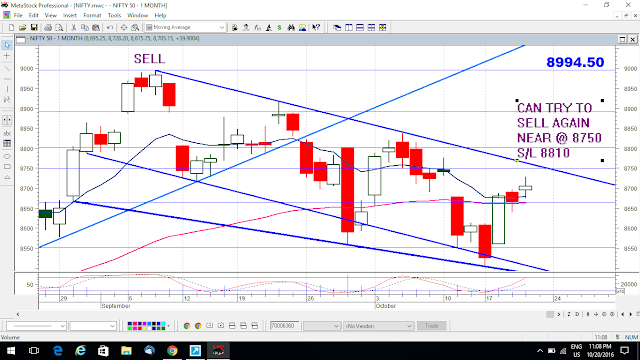India's marine product exports have been a bright spot in the otherwise gloomy merchandise export growth scenario of the country. After managing to recover from last year's blip, marine exports is all set to achieve the $5.6 billion revenue mark, closest to its record high, this year. A. Jayathilak,Chairman of Marine Products Export Development Authority (MPEDA), the Commerce Ministry arm responsible for the promotion of quality marine product exports, talks about the increasing global demand for shrimp, and India's preparedness to harvest this single most important growth driver for marine exports. Excerpts:
Marine product exports dipped 10 per cent last year. How do you see the market growth now?
Even though we had a 10 per cent dip last year, in the first eight months or so, we have recovered that completely. We are going at 10 per cent growth rate for the last six months. I think the worst of recession is over. As far as the fish sector is concerned, the worst period is over. If you look at the rate of export growth, we are confident of touching $ 5.6 billion this year. We have set a $ 10 billion target for 2020.
If you look at our marine exports basket, it is heavily skewed in favour of shrimp. Here again, there is a very sharp focus on one particular species. Is this way of export promotion sustainable?
Marine product exports dipped 10 per cent last year. How do you see the market growth now?
Even though we had a 10 per cent dip last year, in the first eight months or so, we have recovered that completely. We are going at 10 per cent growth rate for the last six months. I think the worst of recession is over. As far as the fish sector is concerned, the worst period is over. If you look at the rate of export growth, we are confident of touching $ 5.6 billion this year. We have set a $ 10 billion target for 2020.
If you look at our marine exports basket, it is heavily skewed in favour of shrimp. Here again, there is a very sharp focus on one particular species. Is this way of export promotion sustainable?
Ideally, we shouldn't be putting all our eggs in one basket. This is happening because of the huge international demand for pacific white shrimp. It goes by market dynamics. We don't expect the demand to come down overnight because it has already captured the world market. But, yes, we need to diversify.
Why is white shrimp farming so attractive?
One visit to any farm in Andhra Pradesh will tell you why it is so attractive. The payback period for white shrimp farming is the smallest for any crop. It is less than two years. The cost of aquaculture per hectre is Rs 12 lakh. In the first year itself you can take one crop; you will get a net profit of Rs 6 lakh. In the second year, you get a net profit of Rs 12 lakh. If you invest 12 lakh rupees, you get 18 lakh in two years, and you would have recovered your entire investment. Everything else is a bonus after that. That is why anybody who comes to coastal Andhra Pradesh, and sees the economics of this, finds it attractive.
Food exports to USA - a key market for India - are increasingly coming under regulatory scrutiny. How can the aquaculture industry be equipped to face the US Food and Drug Administration's (FDA) challenge?
Food exports to USA - a key market for India - are increasingly coming under regulatory scrutiny. How can the aquaculture industry be equipped to face the US Food and Drug Administration's (FDA) challenge?
The quality standards are becoming more and more stringent not only with USFDA, but with other regulators, too. The standards, and the periodic modifications, have to be communicated to and understood by the entire supply chain. In all our extension activities, this information is communicated, so that they adhere to all the procedures that are now mandated internationally. We take inputs from them (USFDA), though there is no direct role for the regulatory agency. The other way to ensure best practices is to let the exporter know who actually produced the lot he exports. When you merely aggregate and sell in containers, you will not know which lot came from where. We are setting in place a traceability system. It will take some time. But with bar coding, you will be able to trace the shrimp to the pond.
Each year, new areas are getting added. Every region has its own problems…
The great demand for shrimp itself will ensure that the industry takes care of this problem. They are aware that they will either get the best return, or get zero return - if the lot is contaminated, it is not exported at all.
The great demand for shrimp itself will ensure that the industry takes care of this problem. They are aware that they will either get the best return, or get zero return - if the lot is contaminated, it is not exported at all.
The minister had announced plans for turning MPEDA into a federation of state-level bodies. You already have 14 regional offices which are trying to assist state-level exporters. How relevant, hence, is this new attempt?
This is similar to what we have already introduced in the spices sector (Jayathilak was earlier chairman of the Spices Board). As regulatory and marketing agencies, Spices Board and MPEDA cannot get into cultivation or production. Both are clearly areas that come under the domain of respective state governments. However, farmers approach us (MPEDA, Spices Board) for problems related to land or cultivation. Since our mandate is limited, we cannot intervene. The new state-level agencies will fill that gap. These agencies will function as a good coordinating mechanism between the production aspect of the supply chain and the export linkages. A very good, established exporter, one who has already developed his contacts with the state government and MPEDA, may not need this. But institutional mechanism will help every farmer and every exporter, as you will have a single window system to address all the issues. These agencies will be headed by the Chief Secretary, so there will be total involvement of the state government in addressing all the production related issues. It will be addressed by all the regional offices of MPEDA, which will take care of quality control and export promotion. That is the value addition.
This is similar to what we have already introduced in the spices sector (Jayathilak was earlier chairman of the Spices Board). As regulatory and marketing agencies, Spices Board and MPEDA cannot get into cultivation or production. Both are clearly areas that come under the domain of respective state governments. However, farmers approach us (MPEDA, Spices Board) for problems related to land or cultivation. Since our mandate is limited, we cannot intervene. The new state-level agencies will fill that gap. These agencies will function as a good coordinating mechanism between the production aspect of the supply chain and the export linkages. A very good, established exporter, one who has already developed his contacts with the state government and MPEDA, may not need this. But institutional mechanism will help every farmer and every exporter, as you will have a single window system to address all the issues. These agencies will be headed by the Chief Secretary, so there will be total involvement of the state government in addressing all the production related issues. It will be addressed by all the regional offices of MPEDA, which will take care of quality control and export promotion. That is the value addition.
Q. Is your $10 billion target completely dependent on pacific white shrimps?
We want to promote the black tiger shrimp, the original Indian shrimp variety, too. Suddenly there is this craze for pacific white shrimps, and we have forgotten our family heirloom, so to speak. Black tiger shrimp has a distinctive taste. There is a latent demand for black tiger, which is not tapped. It is a niche market. Even now there are enquiries, but we are not able to meet them. We will actually get a higher price for black tiger, since when supply is low, unit value realisation will be higher. Once our nucleus breeding centre in Andaman is ready, the production of black tiger will also go up. That is how we will approach the $10 billion target.
We want to promote the black tiger shrimp, the original Indian shrimp variety, too. Suddenly there is this craze for pacific white shrimps, and we have forgotten our family heirloom, so to speak. Black tiger shrimp has a distinctive taste. There is a latent demand for black tiger, which is not tapped. It is a niche market. Even now there are enquiries, but we are not able to meet them. We will actually get a higher price for black tiger, since when supply is low, unit value realisation will be higher. Once our nucleus breeding centre in Andaman is ready, the production of black tiger will also go up. That is how we will approach the $10 billion target.
Q. What is the most critical issue before you at the moment?In case of pacific white shrimps, the critical issue is the supply of raw material. Right now, we are dependent on seedlings from the US. In the two to three years, we should be totally self-sufficient in providing seedlings. That is the plan.


